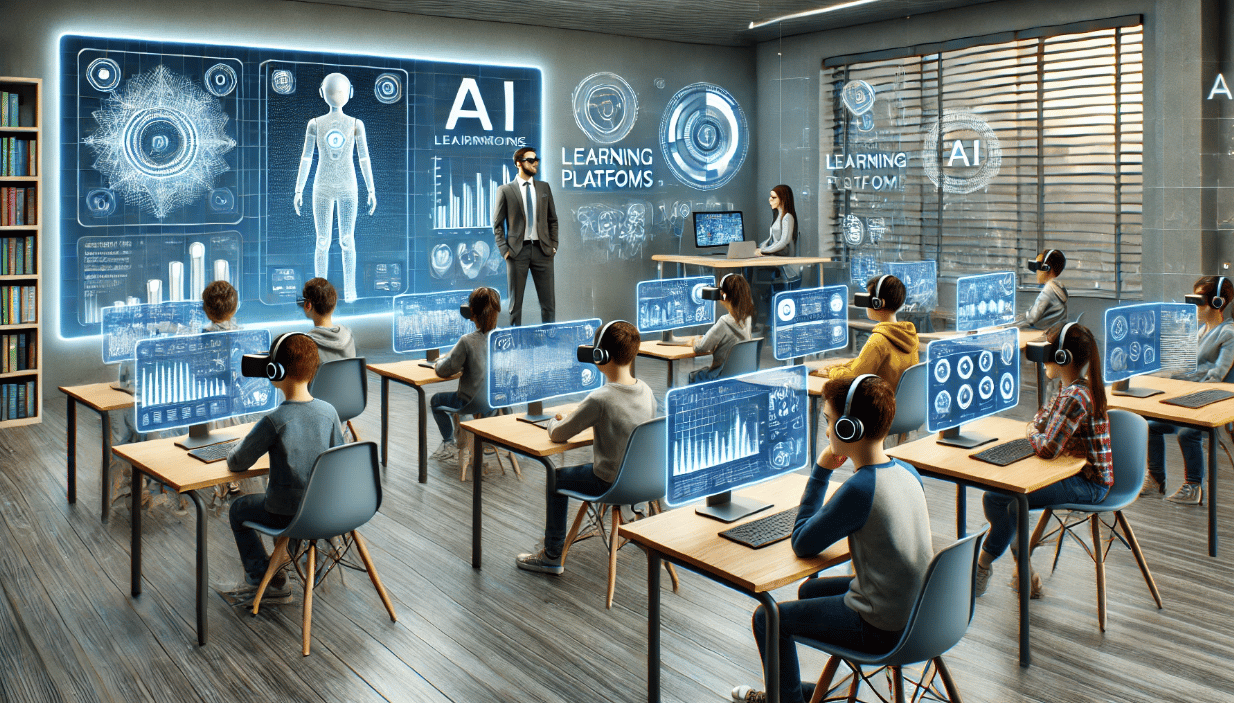The Rise of AI in Classrooms
The future of education is here, and it’s powered by artificial intelligence (AI). As technology continues to advance, AI in classrooms has emerged as one of the most transformative trends in modern education. AI tools are helping educators personalize learning experiences, streamline administrative tasks, and provide students with smarter, more efficient ways to engage with content.
In this post, we’ll explore the many ways AI is reshaping education, the benefits and challenges it brings, and how it’s transforming classrooms around the world. Understanding how AI is being integrated into learning environments is crucial for staying ahead in this digital age.
How AI Is Changing Classrooms
AI has the power to revolutionize education by offering solutions to some of the traditional challenges schools face, from personalized learning to efficient classroom management. Let’s break it down:

1. Personalized Learning with AI Tools
AI-powered platforms can tailor lessons to the unique needs of each student. By analyzing data on student performance, AI can suggest personalized lessons, assignments, and exercises that best suit a learner’s pace and preferences. Tools like Khan Academy’s AI tutor or Socrative allow students to learn at their own speed, which is essential for improving engagement and learning outcomes.
You can learn more about personalized learning tools in our guide to student success strategies.
2. Automating Administrative Tasks
Teachers often spend a significant amount of time on administrative tasks, such as grading assignments or tracking student progress. AI can automate these processes, freeing up more time for teachers to focus on teaching. AI-based grading systems can assess assignments, quizzes, and exams, and provide instant feedback to students. Grammarly, for example, can automatically review and grade writing assignments, which improves both efficiency and accuracy.
Harvard Business Review on AI in Education.
3. Enhancing Student Engagement
AI can make learning more interactive and engaging. From virtual reality (VR) and augmented reality (AR) to AI-based game mechanics, students are now able to experience subjects in an entirely new way. Imagine a history lesson where students don’t just read about ancient Rome—they explore it through virtual tours led by AI avatars. These immersive experiences foster deeper understanding and greater interest in learning.
Benefits of AI in Education
1. Increased Access to Quality Education
AI makes it easier for students from around the world to access quality education. With AI, education can be delivered remotely, breaking down geographic barriers. Tools like Coursera and edX provide students with the opportunity to take online courses from top universities and institutions, democratizing access to knowledge.
For more on online learning platforms, read our post on Top Digital Learning Platforms.
2. Feedback for Students
Unlike traditional methods where feedback may take days, AI provides instant feedback. This is especially important in subjects like math or language arts, where immediate guidance helps students correct mistakes in real-time. AI-powered tools like Quizlet and Duolingo help students continuously improve through immediate corrections.
3. Data-Driven Insights for Educators
AI tools offer data-driven insights that help educators track student progress, identify weaknesses, and adjust their teaching methods accordingly. For instance, AI dashboards can give teachers detailed reports on each student’s progress, highlighting areas that need improvement. This helps ensure that no student is left behind.
UNESCO’s Report on AI and Education.

Challenges of AI in Education
1. Digital Divide
While AI in education has the potential to democratize learning, it also raises concerns about the digital divide. Not all students have equal access to the necessary technology and internet connectivity. Schools in low-income areas may struggle to implement AI tools effectively, leaving some students at a disadvantage.
2. Privacy and Security Concerns
The use of AI in classrooms raises concerns about the privacy and security of student data. AI systems collect vast amounts of data about students’ learning habits, performance, and even personal details. Protecting this data from misuse or breaches is a critical issue that needs to be addressed as AI continues to integrate into education.
3. Teacher Training and Adaptation
As AI becomes more prevalent, teachers need to be properly trained on how to use these new tools. Professional development programs must be implemented to ensure that educators feel comfortable and confident in incorporating AI into their classrooms. This could take time, and many teachers may be hesitant to adopt AI due to lack of familiarity with the technology.
The Future of AI in Classrooms
Looking ahead, the role of AI in education will continue to evolve. As AI technology advances, we can expect even more sophisticated systems that can adapt to students’ needs in real-time. The integration of AI with robotics, virtual reality, and big data will further enhance the learning experience, making education more interactive, personalized, and effective.
However, it’s important to remember that AI should be viewed as a tool to support teachers, not replace them. The human element of teaching—emotion, empathy, and creativity—remains irreplaceable. As AI continues to evolve, finding a balance between technology and traditional teaching methods will be key.

Embracing AI for a Smarter Future
AI in classrooms is not just a passing trend; it’s a revolution that’s already underway. From personalized learning and real-time feedback to automated administrative tasks, AI is fundamentally changing the way we approach education. As more schools and universities adopt AI tools, we’ll see better learning outcomes and a more inclusive educational system.
By staying informed about the benefits, challenges, and future possibilities of AI in education, students and educators can harness the power of this technology to create a smarter, more efficient, and more personalized learning environment




One thought on “AI in Classrooms: Transforming Education with Artificial Intelligence”